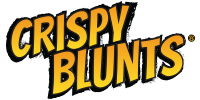Eric Layland of Canna Ventures Talks Cannabis Marketing
Eric Layland, the founder and principal of Canna Ventures, stopped by to talk to Marijuana Retail Report about the new age of cannabis marketing. Canna Ventures is a full-service branding and marketing agency that has done national attitudinal research. Eric possesses over 21 years of evolving experience in digital marketing putting him in select company. Past client work includes oversight of digital and search marketing programs for local heavyweights like Microsoft and Banner Bank. He also understands the needs and resource constraints of start-ups and has participated in over 150 client programs spanning e-commerce and lead generation for both B2B and B2C markets. His personal noted areas of expertise include customer acquisition strategy, search engine optimization, content marketing, social media, paid digital advertising and marketing analytics.
Marijuana Retail Report: Eric, what made you want to start Canna Ventures?
Eric Layland: Originally we had what we’ll call our mainstream agency and we’re servicing clients in the retail cannabis space. We were uncertain really about how the feds would look at. Even though we were providing services to the market and not selling or touching the plant, we were just concerned. We saw that i502 was going to pass so we created Canna Ventures as an offshoot of Confluence Digital, which became what I guess you’d call the parent company. Again, just doing some due diligence, going to networking events, talking to people and realizing that there was a real absence of marketing knowledge in the industry. What we wanted to do is be supportive of legalization and ending prohibition and we wanted the industry to get off to the best start possible. We know that there’s a lot of stigma and baggage associated with the industry and we wanted to help some of these fledgling companies get off the ground and start to position themselves and in essence operate as a normal industry without that baggage, providing some guidance and saying, “Here’s how you do it in the real world,” so to speak.
Marijuana Retail Report: Considering the restrictive nature of the market, what do you see as the biggest hurdle for a lot of these new retail cannabis ventures entering into the industry for the first time?
Eric Layland: The biggest hurdle is there’s no blueprint. There’s nothing that really they can look at as a direct reflection of having done it before. Everyone is starting from scratch and adjusting as they go. What we started to look at was what’s going to be the appeal of the product other than the obvious. There’s an aspect of some folks that just like to consume cannabis and that’s great. There’s nothing wrong with that. As an adult, you should have the ability to do that, but what we also saw was the health aspects, which I’ll be completely honest, when we looked at this, it had been 20 years since I had smoked pot in college. I knew things had changed, but what I didn’t know was just how much it had changed and how the medical side had really evolved. At first I was a little skeptical, to be honest. I thought, “Okay. Well maybe these people, they just want to smoke, so they say they have a bad back.” Then digging into the research, and I think that’s one of the things that Canna Ventures is unique in that we really dive into the research. There’s no research out there so we did our own trying to help these fledgling retailers get some sort of knowledge about what does the consumer wants. What are their motivations for selecting Blue Dream over an OG Kush or whatever? Whether it’s dabbing or smoking, without any blueprint for these retailers to point to, we really felt that what we can do is provide that research for them.
The study we’re releasing now is an update of the first study did in 2015 to just say, “Hey, if cannabis is legal where they live, here’s what people in the market are looking for.” We divided the market into four segments and tried to bring some order in a sense to this new opportunity for retailers and give them a little bit of guidance into best practices and what that market was looking for.
Marijuana Retail Report: How do you manage to get your client’s’ message through the restrictive barriers?
Eric Layland: I think initially what we’ve seen, at least for the Washington state timeline and that also aligns with Colorado, is that influencer marketing is big. If you can have events, and if you can align yourself even with celebrities to a degree, it was thought of as a success. Although there’s some debate over how effective that truly is. In time, Google and Facebook, which for mainstream businesses are the core digital advertising channels, are going to realize that there’s money to be made in this industry. That’s the reality. When they’re going to change is when they know that there’s money to be made without the feds cracking down on them.
In the meantime, what we’ve been able to do is really talk to our clients about delivering an experience. By that I mean in a digital sense, a professional presentation of the website, trying to avoid using … Yeah, I know there’s a phrase out there called the “bongs and thongs” sort of approach, which if you’re a kid, 18 to 24 or so, that’s going to be attractive. We all get that, but that’s not the whole market. The market is you’ve got people into their 30s, their 40s. My mom, who is 70, is even considering giving it a try. She’s got aches and pains along with a lot of the Baby Boomers and they’re not interested in smoking to get high, but interested more in non-prescription based health alternatives.
It really becomes a much more dynamic and in essence complex market. Creating content that’s informative, educational, and provides utility. Something that starts to bridge a gap with the consumer that, says “Oh, this brand, they’re producing content that I can rely on and it’s trustworthy and helps me make a better decision on the types of brands I want to associate with.” That’s what we’re finding a lot of success, in the content creation game. Instagram is exploding in a sense, although they’ve also pulled down some accounts that have been gratuitous in how they show consumption. If you’re showing your product and you’re doing it in a professional way, that’s a great avenue as well as the emergence of some digital channels. Even without paid advertising, you can still get in front of that audience. Then there are direct relationships with publishers that can beneficial. It’s tough to be able to manage dozens of relationships as a startup, but if you can pick a few that work and bring a quality audience, that can still be effective.
Marijuana Retail Report: I know that your state attorney general is looking for ways to protect businesses within your state, but if the national AG is putting hints on a crackdown, how does it affect your growth strategy for your clients?
Eric Layland: Well that is a great question. I think it’s something we need to keep an eye on. If we look at both sides of the market, the medical is probably a safer play right now. The recreational side, there’s tons of upside, but it is an area where I think some of these brands need to check themselves a bit and say, “The message that’s coming out about our products and services and the visual imagery, how we talk about our product, is that a message that’s going to rile up people that already aren’t supportive of what we’re doing? Or is there a way we can change that message to be a little bit more accepting?” Those are considerations that brands will have to make. The other big factor I would say is the way that there’s a patchwork of laws. Every state has a different law and there’s no interstate commerce. This geographic restriction is an inhibitor. If you have a good legal team, there’s some legal wrangling you can do to get around some of those laws, but a lot of these folks don’t have the deep pockets to go hire an experienced law firm that can develop an intellectual property strategy for them to be able to get across state lines while keeping within the legal parameters of each particular state. Then with California, with the laws that they’re going to enact, there’s some uncertainty about what the limitations might be. Will they allow it to be truly a free market or are they going to put some constraints on it that might lead to physical store locations or however that happens to manifest itself.x
Marijuana Retail Report: What is the first thing a new retailer should do when looking to enter the industry?
Eric Layland: I think there’s no substitute for doing your research. Who is your market? One of the key things for retailers, of course, is location. Knowing the local regulations, what are the restrictions in terms of where your potential space can be located. I know originally when the i502 passed, the parameters were I think it was 1,000 feet from parks, schools, daycares, churches. There’s probably a handful of other things that you couldn’t locate within 1,000 feet of. Now that’s been pulled back I believe to 400 or 500 feet. Understanding where that location and not so much the surrounding buildings, but what’s the audience there? What’s in that neighborhood? Are you looking at demographics and/or psychographics? Are you looking at a blue-collar kind of neighborhood? That’s going to impact your product mix. That should impact your retail store presentation. You want to be a part of that community, not stand out and put some Taj Mahal in a blue-collar neighborhood. Or likewise, go budget in a high, upscale neighborhood. You want to match yourself to your environment.
Marijuana Retail Report: What is the biggest change that you’ve seen since you’ve gotten into the industry, and what do you predict could happen within the industry in relation to marketing within the next 10 years for cannabis retail?
Eric Layland: I would say the biggest change that I’ve experienced is the physical presentation of a store. When stores just opened, the first few I went to were pretty shady. I remember the first one, walking in. It was a Friday night and I was with my girlfriend. It was not in a great section of town. She didn’t want to stay in the car, so we went in. We were greeted by this enormous bouncer guy, who lets us in the door and into this waiting area that had a mangy old couch. No windows, nothing. Then there was this nondescript door that when we showed our ID, we could through this door and look at the merchandise. It was not an inviting kind of experience. Now since then there’s been some phenomenal improvements in retail space design and usage. I think there’s still a bit of a cookie cutter approach, but there’s an emergence of high quality, very professionally designed retail spaces.
You can visit Canna Ventures by clicking here.




































